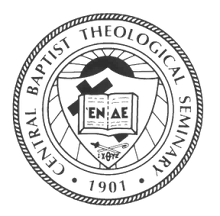Over the past several days I have had opportunity to experience the grandeur of creation from extremely different settings, New Hampshire, Georgia, Nebraska, and South Dakota. My travels first took me to New Hampshire, always lovely, especially during summer (when Kansas tends to heat up a bit!) My host arranged for a helicopter ride as a way to see the beautiful mountains, God’s great handiwork forged over millennia. Heavily forested and full of sparkling lakes, New Hampshire is surely a “theatre of glory,” as Calvin’s 1545 catechism describes the natural world. Deeply engaged in conservation and ecological concerns, this part of New England holds heritage and innovation closely together. Beautiful churches dot the landscape, many of which are ably led by lay ministers—a key consideration for theological schools. Whirring along at about 1000 feet, we witnessed creation throbbing with holy grandeur. The words of the Psalmist came to mind: “Where can I go from your spirit? Or where can I flee from your presence?” (Ps. 139: 7).
No amount of travel brochures could prepare me for the shimmering display of the Black Hills of South Dakota. Ponderosa and Lodgepole pines, aspen and birch, cover the mountains, and wildlife in abundance populate the hills and grasslands. Bison, bighorn sheep, pronghorns, mule deer, wild turkeys, bears, mountain lions, prairie dogs, and wild (mostly tame and playful) donkeys are within the national forest, some within view. One needs to be slowed by a “buffalo jam” in Custer State Park for the full experience. Again the words of the Psalmist came to mind: “O Lord, how manifold are your works! In wisdom you have made them all; the earth is full of your creatures….When you send forth your spirit, they are created; and you renew the face of the ground” (Ps. 104: 24, 30).
Older theological tomes pictured creation more as backdrop for humanity rather than seeing the close and interdependent relationship God intended. Further, a utilitarian view of natural resources tended to diminish the worth of the other creatures and their places of habitation. One cannot visit this region without soon learning of the Lakota history, a tragic history spattered with the blood of Wounded Knee where the largest massacre occurred. Promised the Black Hills “forever,” this treaty with the Lakota only lasted four years as gold drew ever more white settlers to the area. Attempting to decimate a thriving culture, the US Calvary imposed the restraint of reservation life on these buffalo-hunting nomads. Thankfully many Lakota survived, although not in their preferred way of life. Greed and violence stain the legacy of intercultural relationships here and, sadly, around the world as sinful humanity refuses to acknowledge that all creation belongs to God.
God’s Spirit continues to enliven creation, including the human members of it. I am grateful for the renewing power of encountering God’s presence in the wonder of the Book of Nature, as the medieval theologians called creation, to be studied alongside the Book of Scripture. God can be trusted to speak through both.
Molly T. Marshall
To learn more about Central as a formative, creative, and progressive seminary, continue visiting our website.
P.S. Hopefully, I will give Georgia and Nebraska their due in some future blog.

No comments:
Post a Comment